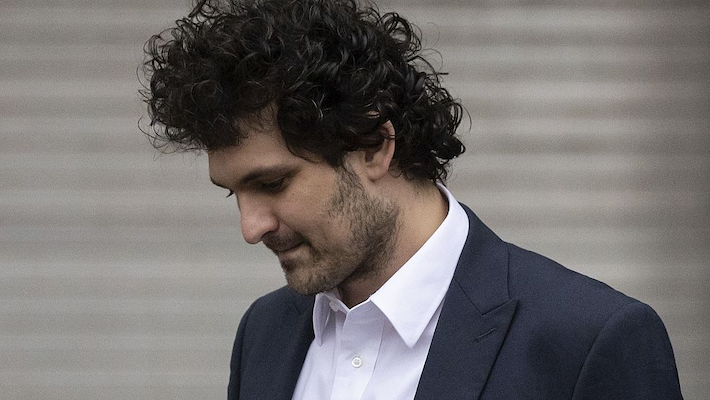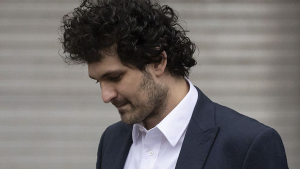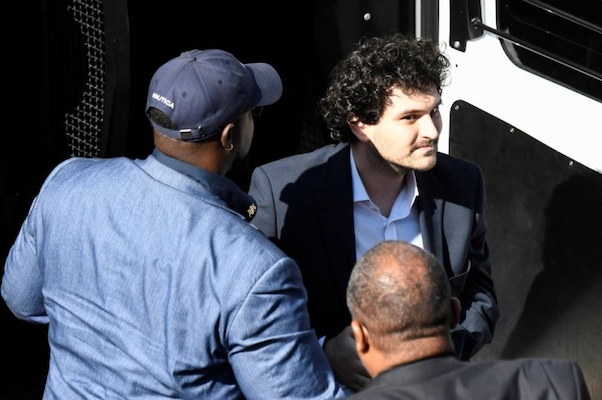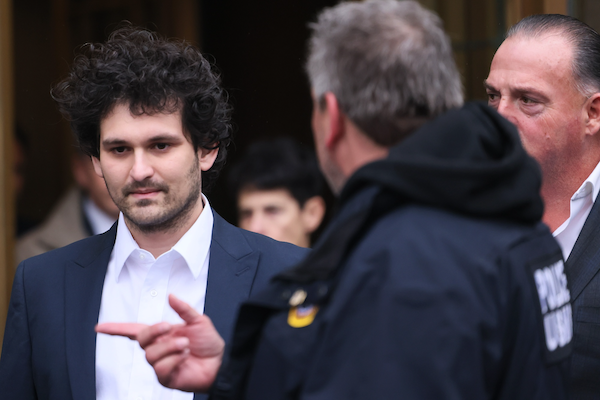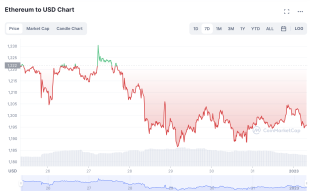Join Our Telegram channel to stay up to date on breaking news coverage
The reputation of Sam Bankman-Fried’s trading company, Alameda Research LLC, served as the foundation for the cryptocurrency exchange FTX.
Alameda brought Wall Street’s tricks to the world of cryptocurrency, and observers believed it was doing well. But little was known about the company’s trades, which included a successful early wager with bitcoin in Japan, outside of the company. Alameda did not reveal its performance and had no outside investors.
Before being charged with fraud and other offenses by federal prosecutors in December and then taken into custody, Mr. Bankman-Fried claimed in interviews that Alameda had succeeded up until a collapse in cryptocurrency prices in November tripped it up. He claimed that by the time he realized what had gone wrong, it was too late because he was no longer in charge of Alameda at that point.
However, a closer examination of Alameda reveals that it has never been very successful at investing, and Mr. Bankman-Fried remained heavily involved in it even after he stood down as CEO in October 2021, according to former workers, business records, investors, and federal authorities.
The company made significant bets, winning some and losing a lot. And Mr. Bankman-Fried made repeated attempts to borrow money and cryptocurrency to support those bets while making double-digit interest rate promises to lenders.
In order to start a crypto loan company in 2020, Citigroup Inc. was looking into agreements with Alameda and other companies. Austin Campbell, who was at the time the bank’s co-head of digital asset rates trading, claimed he lost faith in the company after receiving evasive responses to his inquiries.
The complete absence of a risk-management framework that they could describe in any meaningful way, he added, was what he noticed first and what gave him the willies.
Alameda bet billions of dollars on the expansion of the cryptocurrency market as it grew, money that federal authorities recently claimed was stolen from FTX customers. It staked money on various firms focused on obscure coins. It made real estate purchases and political donations.
Everything fell apart in 2022. Both businesses filed for bankruptcy in November, owing their consumers billions of dollars and eroding trust in the crypto sector as a whole.
Bad Trading
According to Mr. Bankman-Fried, Alameda was able to cover significant losses with cash intended for FTX due to poor record-keeping and a problem with a bank account. He is set to enter a not guilty plea to fraud charges at a hearing on January 3.
However, Alameda’s CEO at the time of its collapse, Caroline Ellison, and co-founder Gary Wang have admitted guilt to accusations of fraud and are working with law enforcement. According to Mr. Wang’s attorney, his client has accepted responsibility for his deeds. Ms. Ellison has expressed regret for her part in the disaster.
In order to steer donations to the causes where they will have the greatest impact, a concept known as effective altruism, Mr. Bankman-Fried told people that one of the reasons he founded the company was so he could give away a portion of its income. His borrowing of money from rich people involved in that area was one of the ways he got financing for trading. He returned with a lot of cryptocurrency, including a loan from Skype co-founder Jaan Tallinn for around $100 million worth of ether.
The first significant transaction made by Alameda included an arbitrage in Japan, where bitcoin was more expensive. Those who could successfully negotiate the nuances of the local crypto market could make money by purchasing the digital currency overseas and reselling it to Japanese customers at a higher price.
The trade chance vanished quickly. Before the pricing difference closed in the beginning of 2018, Alameda made between $10 million and $30 million in profits, according to persons familiar with the market. However, the cost of the capital utilized to finance the transaction reduced the profit.
People acquainted with the trading said that Alameda’s trading algorithm, which was created to execute a high number of automated trades quickly, was incurring losses due to incorrect price predictions.
His loan was recalled by Mr. Tallinn. According to those sources, by the spring of 2018, Alameda’s assets had decreased by more than two-thirds, to about $30 million, in part because of a significant loss on XRP, the tokens of the Ripple payment network.
For Mr. Bankman-Fried to maintain the business, he required increasing sums. According to those acquainted with the pitches, he made annual returns of up to 20% to cash or cryptocurrency lenders as early as 2018.
According to a document, when a potential lender inquired about Alameda’s finances, Mr. Bankman-Fried’s attorney responded that the company frequently handled sizable quantities of bitcoin but did not provide any specific financial details.
In a letter on the letterhead of his law company, Fenwick & West LLP, Daniel Friedberg stated,
We know the owner of Alameda and consider him of the best reputation in the industry.
Later, he accepted a position as chief regulatory officer at FTX. Requests for response from Mr. Friedberg and his former legal team were not answered.
During the first Binance Blockchain Week in Singapore in January 2019, 1,500 people attended. The meeting, described as a discussion of the future of the developing digital-assets business, was sponsored by Alameda for a fee of $150,000. According to others there, Mr. Bankman-Fried used the forum to look for new lenders.
According to persons acquainted with the finances, prospective lenders received a leaflet that said the company had $55 million in assets under management. The majority of it was cash borrowed to finance its trades.
Mr. Bankman-Fried started relocating the company from California to Hong Kong in February 2019. A group of roughly 20 workers put in a lot of time. The crypto markets were 24/7.
Mr. Bankman-Fried founded his own exchange after learning of the failure of several others that investors used to purchase and sell cryptocurrency. He explained to several people that the plan was to create a business that would serve institutional investors searching for a secure environment in which to conduct business.
Mr. Bankman-Fried appeared to be confident that he could iron out the problems that had derailed earlier trades. He also had the benefit of Alameda, one of the largest cryptocurrency dealers at the time, bringing its trades to the exchange. FTX was launched on April 2019.
Alameda served as FTX’s growth engine thanks to Mr. Bankman-Fried. The trading company was the major market maker for the exchange, which meant that it was constantly open to buy and sell orders from other dealers. According to sources acquainted with its tactics, Alameda occasionally took the losing side of a trade to draw clients to the exchange.
According to recent lawsuits filed by the Securities and Exchange Commission and the Commodity Futures Trading Commission, the nation’s leading market regulators, Mr. Bankman-Fried created a scheme for Alameda to borrow money from the exchange.
No matter how much collateral it posted with the exchange, he instructed Mr. Wang, his co-founder, to build programming that would let Alameda to carry a negative balance on FTX, the SEC claimed. The SEC said that Mr. Bankman-Fried also ensured that Alameda’s FTX collateral wouldn’t be immediately liquidated if its value dropped below a specific threshold.
As a result, Alameda received a line of credit from FTX. The de facto borrowing ceiling should be increased to tens of billions of dollars, according to Mr. Bankman-Fried, the SEC claimed.
Mr. Bankman-Fried maintained that FTX was following the law at all times in public.
The SEC and CFTC claim that Alameda’s record-keeping has consistently been inconsistent. After FTX premiered, not much changed in that regard. In a complaint submitted in December, the SEC said that assets and debts were “typically viewed as interchangeable.”
Mr. Bankman-Fried has made an effort to dissociate himself from Alameda since FTX’s demise. He stated to the WSJ in December that
FTX was a full-time job. Even if I wanted to, I didn’t have the cognitive power left to comprehend everything happening at Alameda.
According to federal regulators, he was heavily involved with FTX and Alameda. Former employees claim that people who worked at Alameda also worked at FTX. The SEC and CFTC both claim that the two businesses shared office space and technology. Top executives, including Mr. Bankman-Fried, Ms. Ellison, and Mr. Wang, collaborated frequently in the Bahamas penthouse that served as both their residence and place of business.
According to the SEC, Mr. Bankman-Fried gave Ms. Ellison, with whom he had a love relationship, the task of fraudulently inflating the value of a cryptocurrency the trading company was borrowing against using Alameda’s purchasing power.
According to Patrick Heusser, the brokerage’s chief commercial officer, when brokerage firm Crypto Finance Group sought FTX for the documentation it required to trade on FTX, the exchange sent over a scan of its ownership structure on a sheet of paper with an Alameda watermark. According to him, FTX requested that all dollar transfers go to Alameda.
Those are the warning signs that we ought to have noticed, Mr. Heusser added.
Some of the clients of FTX and Alameda were concerned that Alameda might profit from trade information obtained from FTX. Conversations with investors included representatives from both departments. Exchanges don’t have active investment arms in conventional finance.
In a blog post to customers and others on his company’s website in October 2020, Jeff Dorman, chief investment officer at digital-investment firm Arca, stated:
The potential conflicts of interest and underlying hazards are substantial when a digital assets exchange also operates as the primary market maker.
Over time, cryptocurrency investors, including Mr. Dorman, found solace in the knowledge that Alameda’s team was probably more focused on developing automated trading models than on whatever information they may learn from their FTX colleagues.
According to executives there, Alameda focused on specialized trading tactics by the end of 2021. Alameda focused in trading so-called alt-coins, such as two that pay homage to the Shiba Inu dog breed, as well as coins produced by FTX itself, such as FTT, while rivals like Wintermute Trading Ltd. and Jump Trading Group made markets in bitcoin and ether, which were quite extensively traded.
In 2021, Alameda produced over $1 billion in profits, according to those with knowledge of the figures. In that year, cryptocurrencies of all stripes, including those made as jokes, skyrocketed.
Evgeny Gaevoy, CEO of Wintermute, remarked,
They were really good at locating and extracting these specific prospects.
In October 2021, Mr. Bankman-Fried appointed Ms. Ellison and another worker, Sam Trabucco, as Alameda’s co-CEOs.
The cryptocurrency market was almost at its pinnacle in December 2021. A month ago, Bitcoin had reached its all-time high. Venture capitalists had invested more than $1 billion in FTX, and Mr. Bankman-Fried was just weeks away from securing an additional $400 million in investment for the exchange.
According to the SEC, Mr. Bankman-Fried continued to have a significant role in Alameda’s decision-making even though he had left his position as CEO by that point.
Six thousand eight hundred kilometers from his base in the Bahamas, in the Central Asian republic of Kazakhstan, the presidential palace was his destination. He presented the case for crypto despite reservations about the vast amount of energy required to manufacture it when speaking with a small group of Western asset managers and hedge-fund executives.
Alameda benefited significantly financially from Kassym-Jomart Tokayev’s backing of crypto miners, who operate the vast numbers of computers required to unlock new coins. This mining corporation had a number of data centers in Kazakhstan, and the trading company had invested more than $100 million in it.
Following the meeting, Alameda started investing additional $1 billion in Genesis Digital Assets. According to a business document that the Journal reviewed, it was by far the biggest venture capital investment made by Alameda. It was bad timing because the price of bitcoin immediately fell, and with it, miner revenues.
According to a business document, Alameda invested $1.4 billion in startups in 2021, up from just $10.5 million the previous year.
A string of defaults resulted from a pair of cryptocurrencies’ fall in May. In order to support failing businesses, Mr. Bankman-Fried extended hundreds of millions of dollars.
However, Alameda’s investments were losing value quickly. Lenders started requesting their money back. According to the CFTC, Mr. Bankman-Fried pressured the company to borrow billions of dollars in FTX client monies to pay off its debts.
Mr. Bankman-Fried was secretly considering closing Alameda a few months before his empire crumbled.
In a paper he shared with others, he stated, “I only started thinking about this today, and hence haven’t vetted it much yet,” according to the CFTC complaint. However, I believe it may be time for Alameda Research to cease operations. Sincerely, a year ago it was probably time to do that.
Related
- Latest FTX and SBF news: “I didn’t move the funds”
- Sam Bankman-Fried, the founder of FTX, will be released on $250 million bond and live with his parents
- FTX’s stunning collapse: what really happened
Join Our Telegram channel to stay up to date on breaking news coverage
